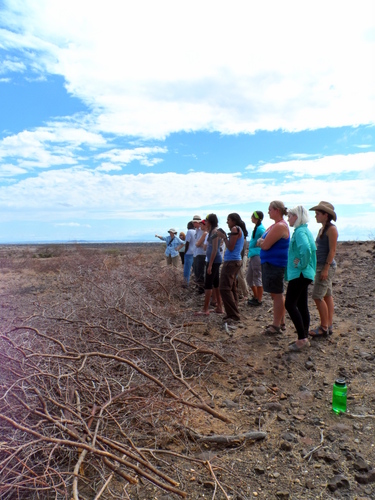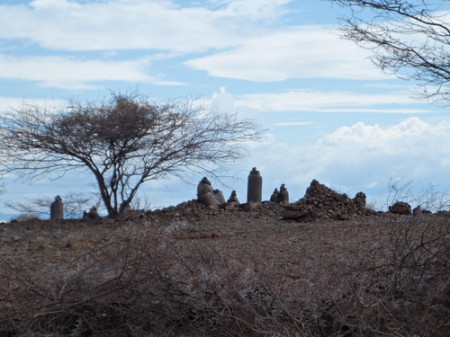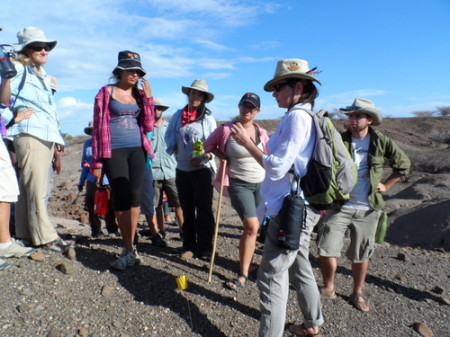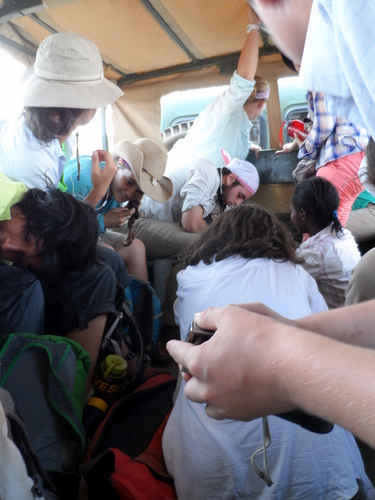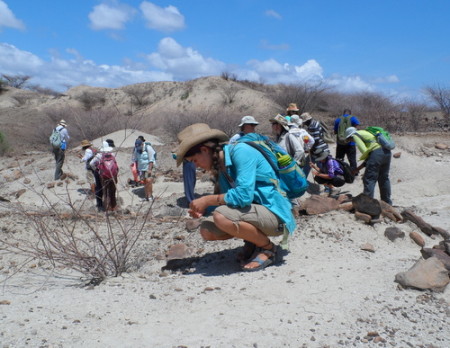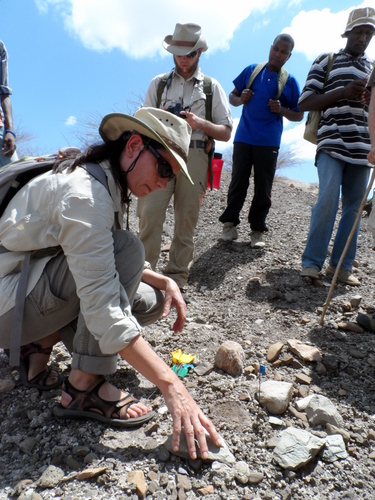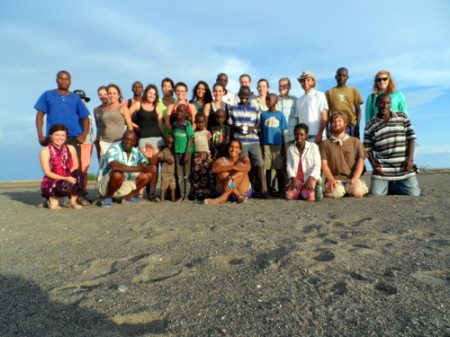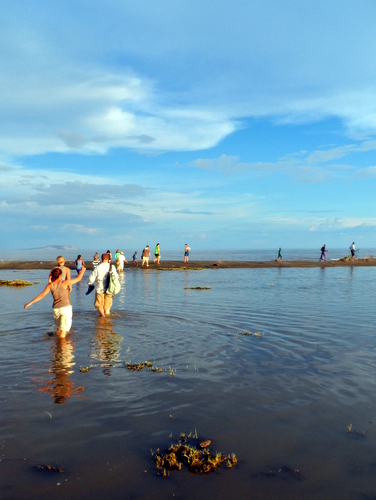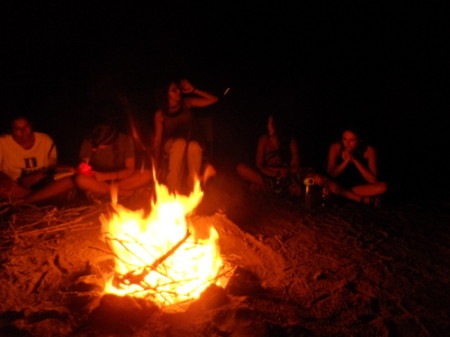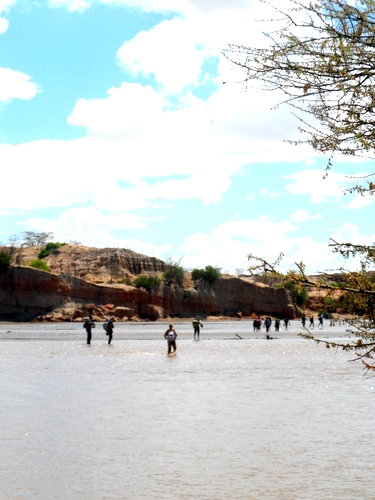On Thursday the students set off for a 3-day camping trip to Nariokotome with Dr. Lisa Hildebrand and Dr. Sonia Harmand. En route, we stopped off at two archaeological sites.
The first was the Kalokol pillar site where Dr. Lisa Hildebrand has previously excavated as part of her research on the early spread of pastoralism through Africa. This monument was first created during the Early Holocene and still holds significance to the Turkana people today, who place large pebbles in small piles at the site as a sign of respect.
The second stop was at Lokalalei 2a, 2b and 2c, which are Oldowan sites that are still very rich in stone tools. Dr. Sonia Harmand showed a few examples and then distributed coloured flags between the students so they could flag their own as they scanned the surface. After they had all ran out of flags, Sonia then went through flagged areas to check how well they had done. Tough luck! Most of them were just natural rocks!
They learned pretty fast though, and within minutes of getting to the second site nearby they were experts in Oldowan tool identification.
After a long but fun day the students arrived at the campsite where the staff welcomed them with hot drinks and biscuits.
The next day we set off early to the site of Nariokotome where the most complete Homo erectus specimen was uncovered. Francis recounted that at the time of the discovery he was a young boy sitting in a tree nearby watching with intent curiosity as the palaeoanthropologists worked there. Little did he know that he would end up working alongside those same people today.
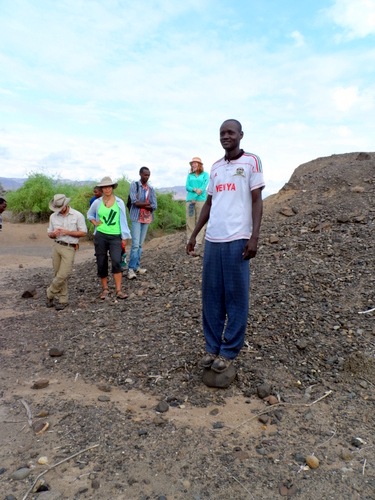
Francis shows us his best Turkana Boy impression as he stands on the spot where the skull was found in 1984
After a brief stop back at camp we proceeded to Kokiselei where there are a number of Early Stone Age sites. Dr. Sonia Harmand took us on a round tour of the sites in the area starting with Kokiselei 1, then 5, 4 and 6. Kokiselei 4 was particularly interesting for the students as it was an Acheulean site as opposed to the others which are Oldowan. Here the students tested their skills at identifying the various tool types of this culture.
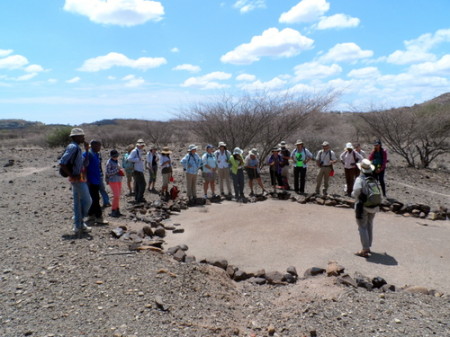
Dr. Sonia Harmand tells the students about the Oldowan site of Kokiselei 5 where she led previous excavations
Following a lunch break under a shady tree near Kokiselei 6, the students headed down to the Kokiselei laga to collect phonolite cobbles and basalt hammerstones to take back to TBI for knapping. They then visited Nadung’a where there is a stromatolite formation to collect red and green rhyolite for knapping too.

